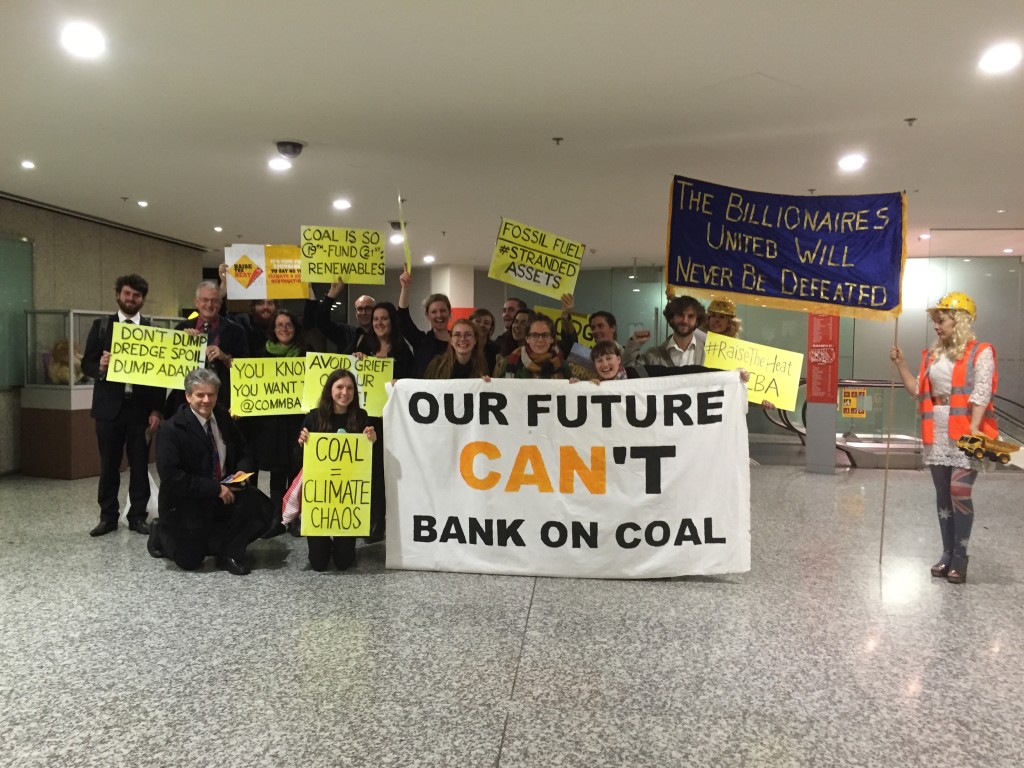
During action describes the things you might want to consider ON THE DAY the action is taking place. These include logistics on the day as well as roles that need to be filled. Plus how to deal with any curve balls that may come your way.
We will have much more to come for this section – including easy downloadables
Meet and greet – mental/emotional preparation
When organising for protest, or civil disobedience we are often facing difficult conditions. Lots of under-resourced volunteers, often trying to do too much. We can neglect some really simple and obvious things to help our group, and our own personal well being.
With just half an hour, there is a LOT that can be done to set up a healthier and safer framework for your protest. Obviously for high risk activities you’d want to aim for more than this. But this is a quick reminder for folks who are organising on the fly, and about to step into action together
Introduce yourself
It sounds silly, but people often miss this obvious step. Particularly with a rapid response protest, or event, things may have been organised quickly. There may be people from different groups coming together.
If there are more than 10 people involved, then:
- give a brief introduction as to why we do this, if people are unfamiliar;
- do a quick name round (including pro nouns) ,
- what role people are holding that day – ie, Media spokesperson, or police liaison; and then
- have a quick chat of a couple of minutes about why they are there. If you are a small group, then you can simply go around the circle. For bigger groups, have people split into groups of 2-3.
Remember, it can be very intimidating if you are new to activism and no one explains things as you go. We should always be as welcoming as possible and communicate to and with the broader group who are there.
Remind the group the goal and objectives for the action
Whilst it might seem self apparent, sometimes it isn’t. We all have different motivations for action. It’s also useful to re-state them to other people, and ground yourself, reminding yourself what the issue is, and what you are there to achieve.
Discuss behaviour and limits
Are you a group that is used to working together, has shared values and has been through this many times before? Or are there new people you might want to be clear with about how you work together?
Some groups have norms that develop over time, others have participants agreements, and some prefer to let everyone do their own thing. No matter what your organising style is, it is useful to be explicit about this. Is this a nonviolent action? If so, what does that mean to your group?
Are you assuming everyone wants to stay for as long as possible and risk arrest, or have you not discussed this clearly? What does it look like for your objectives to be met, and when will it be time to leave?
Wellbeing check
This can be done in just five to ten minutes. It is the kind of thing that is often neglected, and often worthwhile!
You obviously want to ensure you have practical wellbeing issues sorted. Are people comfortable, prepared, are there any medical or mobility issues to consider? But it is also useful to have a very quick check in before heading into action that may involve conflict with workers, security, or police – particularly if you have anyone in the group who may be more likely to be targeted by police, or are vulnerable.
Do a quick check in with a buddy and discuss:
- What do I look like when I’m under stress;
- What do I act like/feel like when I’m under stress; and
- How you can support me.
This gives a brief moment for reflection on our body response, consider any triggers, and how our buddies or group can support us if issues arise.
Check that all roles are filled, and quickly cover off contingencies
You can cross check with our roles list for a reminder, but often last minute changes can happen.
- Ensure you haven’t forgotten any important roles, or tasks – like sending a media release, or checking you have legal support.
- If you want to ensure that only designated people talk to police or media, make sure you point them out to the group and remind them.
Logistics
Should ideally be organised in advance. But if its a rapid response action, or you don’t have much time, you may need to consider these things as you go
Transportation – in any deliberate civil disobedience action, or if you face unexpected arrests you may need to quickly scramble transport to pick people up. Whilst many people may bike or take public transport to an action it can be useful to have a car on hand to move around gear and people.
Provisions – are you going to be there longer than expected? Have you got someone who can grab some food, water, or emergency gear in case of unexpected weather changes.
Communication and decision making
This is something that is often not handled well, or transparently. Particularly if it is a larger group, it is great to be clear in advance how you will all be making decisions together. Does your group prefer to work via consensus or majority vote? Are there a handful of trusted people who are supported by the group to make tactical decisions quickly? No matter which way you work, ensure everything that can be communicated is done so clearly – particularly if there are any negotiations with office staff, contractors or police.
Keeping momentum going
If you are in an action where you are trying to hold space for as long as possible – whether that be occupying a corporate office, stopping trees from being felled, or at a picket line – it can be very easy to lose momentum and energy.
This can be a great opportunity to keep the story of your action going, skill up new activists or get creative. If you are going to be somewhere for a while, maybe you want to do a bit of a teach in, or skillshare? If everyone has spare time, then get everyone onto phones and social media to pump out the message of your action.
Maybe you got more of a media response than anticipated. People might want to practice a couple of lines with each other in case a news camera gets stuck in your face. Or do a quick phone video for socials explaining why you all took action today. Heck, you might want to do some creative re-decorating wherever you are?
And as we refer to in our live socials guide – Feed the beast! You can:
- tell an awesome story of your action,
- share the bigger issues in the campaign,
- interact with people on a live feed, and
- amplify any response you are getting online.
Close and debrief
Make sure you finish strong. End the action on your terms, rather than letting energy and numbers fade away. Ensure you have organised a time for debriefing, and that everyone with ongoing roles – like continuing to do media, socials, or pick up folks from the police station – is well supported. Then celebrate – it’s important!
